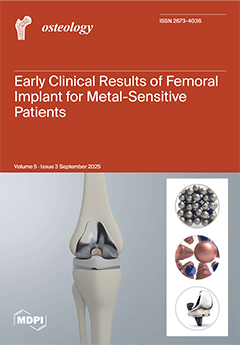Background/Objectives: Overhead athletes, including swimmers, are prone to shoulder adaptations and pathologies, such as scapular dyskinesis (SD) and glenohumeral internal rotation deficit (GIRD). While SD has been extensively studied in various overhead sports, its prevalence and clinical implications in swimmers remain unclear. This study aims to evaluate static scapular asymmetries (SAs), defined as differences in the observed position of the scapulae at rest or in a fixed position, in young elite swimmers and compare these findings with functional scapular dyskinesis (SD) tests, which assess alterations in scapular motion patterns during arm movement. It also assesses potential relationships between SA and SD.
Methods: A cohort of 661 young elite swimmers (344 males, 317 females) was assessed during the National Young Swimming Championships. Scapular asymmetries were measured in two positions: at rest and at 90° abduction with internal rotation. The measurements included the following: (1) dHeight: Difference in superomedial scapular angle height from the C7 spinal process; (2) dDistance: Difference in the distance of the superomedial scapular angle from the body midline; (3) dAngle: Angular deviation of the medial scapular border from the plumb line, assessed using a goniometer. The presence of scapular dyskinesis (SD) was determined using a functional test, and SA findings were compared with SD results. Statistical analyses included ANOVA and chi-square tests, with significance set at
p < 0.05.
Results: Scapular asymmetries were observed in 3.63% to 15.43% of swimmers, with no significant associations with age, gender, BMI, training years, or swimming characteristics (
p > 0.05). A significant difference was observed between dominant limb and scapular height in abduction (
p < 0.05). In position 1 (resting position), SA was significantly more prevalent in swimmers without SD (
p < 0.001 for dHeight,
p = 0.016 for dDistance). In position 2 (abduction), SA was significantly associated with SD-negative subjects in dAngle (
p = 0.014) and dDistance (
p = 0.02), while dHeight was not significant (
p > 0.05). These findings suggest that static scapular asymmetries do not necessarily correlate with dynamic scapular dysfunction (SD), and, indeed, a negative correlation was observed where SA was significantly more prevalent in swimmers without SD in several measures (position 1,
p < 0.001 for dHeight and
p = 0.016 for dDistance; position 2,
p = 0.014 for dAngle and
p = 0.02 for dDistance).
Conclusions: Young elite swimmers exhibit a relatively symmetrical scapular positioning, with scapular asymmetries potentially representing normal adaptations rather than pathological findings. The lack of positive correlation between SA and SD, and the higher prevalence of SA in SD-negative subjects, suggests the need for caution when interpreting static scapular assessments in swimmers as SA may reflect sport-specific adaptations rather than pathology.
Full article



